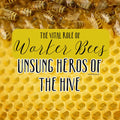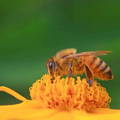
The Life Cycle of a Honey Bee
Discover the remarkable life cycle of a honeybee, from eggs to essential workers in the hive. Gain insights into the stages, duties, and responsibilities of these hardworking creatures. Explore the incredible complexity and efficiency of honeybees and their impact on pollination, honey production, and the environment.
FUN FACT: The entire life cycle of a worker bee is only 6 short weeks.
Subscribe
To join our mailing list and never miss an update!
Honeybees have a fascinating life cycle and a complex system of duties within their colonies. From their birth as eggs to their role as essential workers in the hive, honeybees exhibit remarkable organization and teamwork. Their unique biology and social structure play a vital role in the survival of both their species and the ecosystem as a whole. Learn about the intriguing life cycle and duties of the hardworking honeybee.
The life cycle of a honeybee is a remarkable journey that encompasses different stages, each with its own specific duties and responsibilities. Understanding the life cycle of a honeybee provides valuable insights into the intricate workings of these industrious creatures.
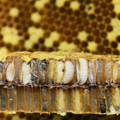
1. EGG STAGE
The life of a honeybee begins as an egg. The queen bee lays thousands of eggs within the hive. Each egg is carefully placed in a honeycomb cell, and the fate of the egg is determined by the cell it is laid in.
Fertilized eggs develop into female bees (worker bees and queen bees), while unfertilized eggs develop into male bees (drones). The egg stage has a short duration of just a few days.
2. LARVA STAGE
After the egg hatches, a larva emerges. The larva is initially fed with royal jelly, a protein-rich substance produced by the nurse bees. This royal jelly stimulates rapid growth and development. As the larva grows, it molts several times, shedding its outer layer and increasing in size.
During this stage, worker bees diligently feed and care for the growing larva by providing them with a mixture of pollen and honey known as "bee bread." Queen larvae are fed royal jelly for the entire stage of development. The larva stage typically lasts for about 6 days.
3. PUPA STAGE
Once the larva has reached its full size, it undergoes a remarkable transformation within a sealed cell. This transformation is known as metamorphosis, during which the larva develops into an adult bee.
Inside the cell, the pupa undergoes significant changes, such as the development of wings, legs, compound eyes, and other vital organs. It takes approximately 12 days for a worker bee to complete its metamorphosis, while queen bees take around 16 days. Male bees, or drones, have a slightly longer pupa stage of about 24 days.
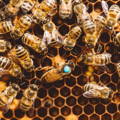
4. ADULT STAGE
Once the metamorphosis is complete, the adult honeybee emerges from the cell. At this stage, the honeybee is ready to take on its various roles and responsibilities within the hive. The adult honeybee's lifespan varies depending on its role.
Worker bees have a lifespan of a few weeks during the summer months when they are actively foraging and performing hive duties. Queen bees, on the other hand, can live for several years, during which they focus on laying eggs and maintaining the hive's reproductive cycle. Male bees, or drones, have the shortest lifespan, living for only a few weeks.
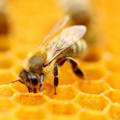
Throughout their adult stage, honeybees are constantly engaged in a variety of tasks, including foraging for nectar and pollen, building and maintaining the hive, caring for the brood, defending the hive and communicating with other members of the colony through complex dance movements and pheromones.
Understanding the life cycle of a honeybee highlights the incredible complexity and efficiency of these hardworking creatures. From their humble beginnings as eggs to their crucial roles within the hive, honeybees play an essential role in pollination, honey production, and the overall balance of ecosystems. Preserving their habitats and ensuring their well-being is crucial for the sustainability of our environment.
Trending Articles
Trending Products
Copyright©2023 All rights reserved. We love to have you share our article as long as you include a direct link to this page. Please contact us for permission and we’ll be happy to collaborate. This article or any portion thereof , including all images, may not be reproduced or used in any manner whatsoever without the express written permission of Gypsy Shoals Farm.



